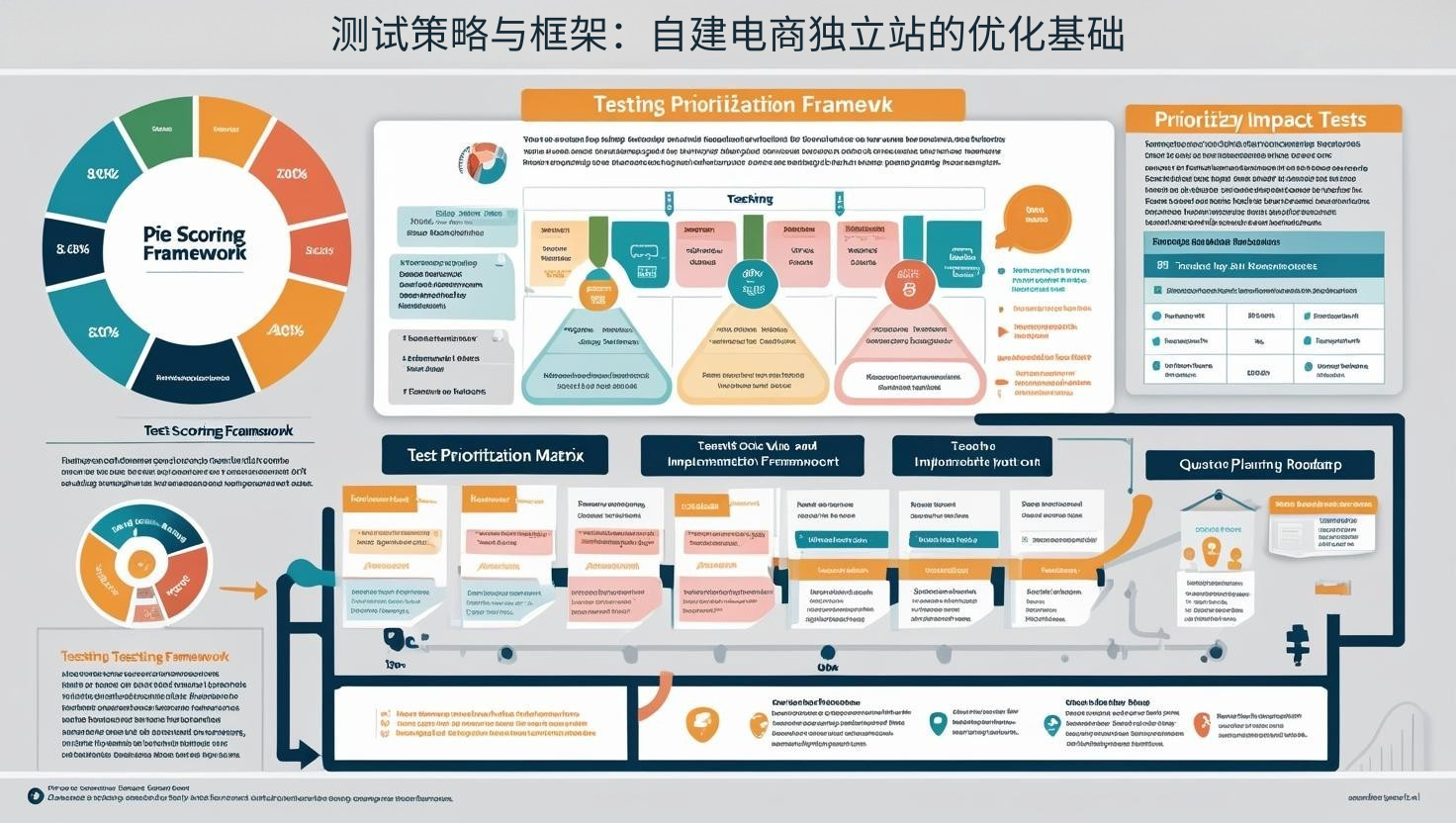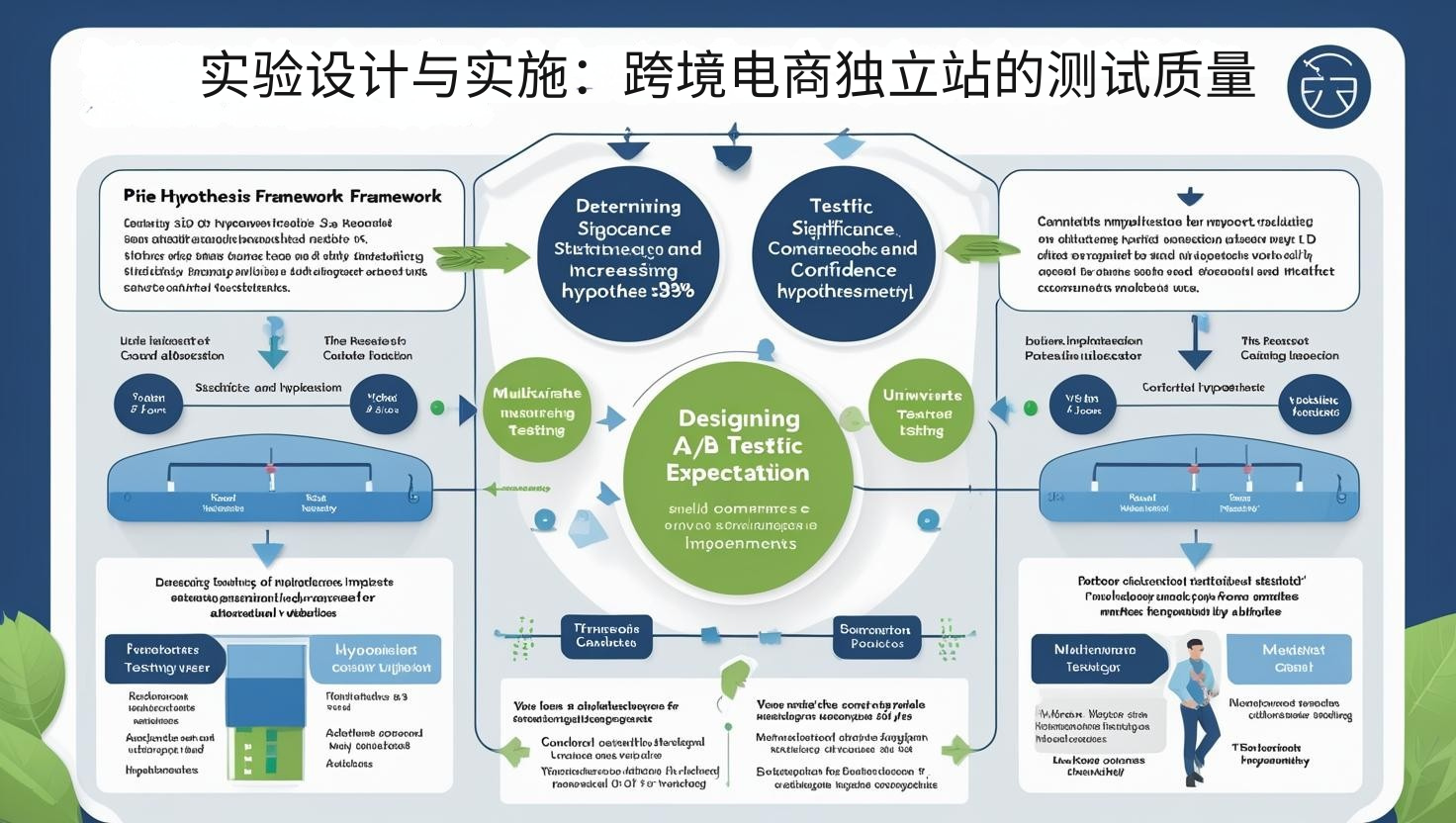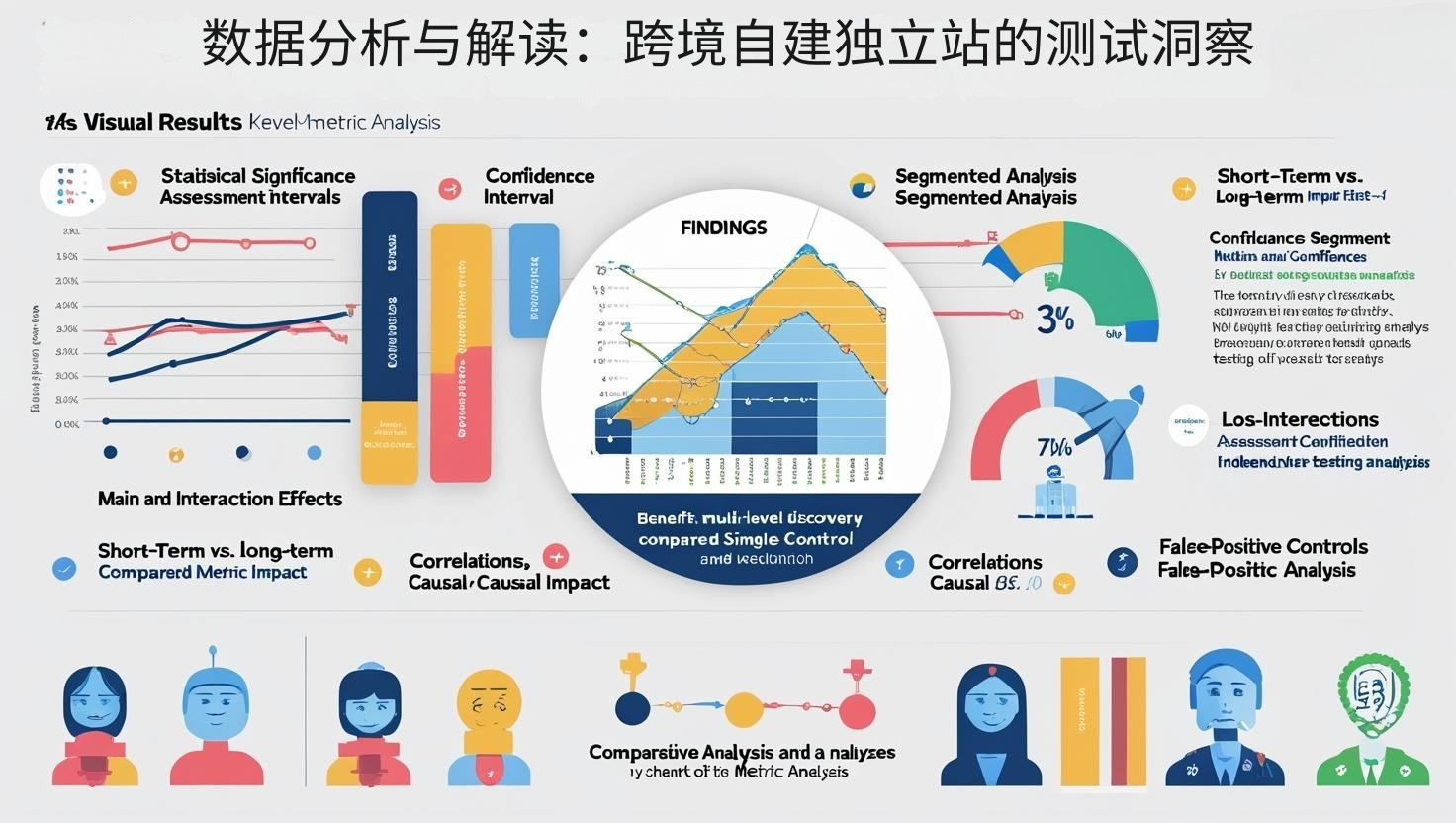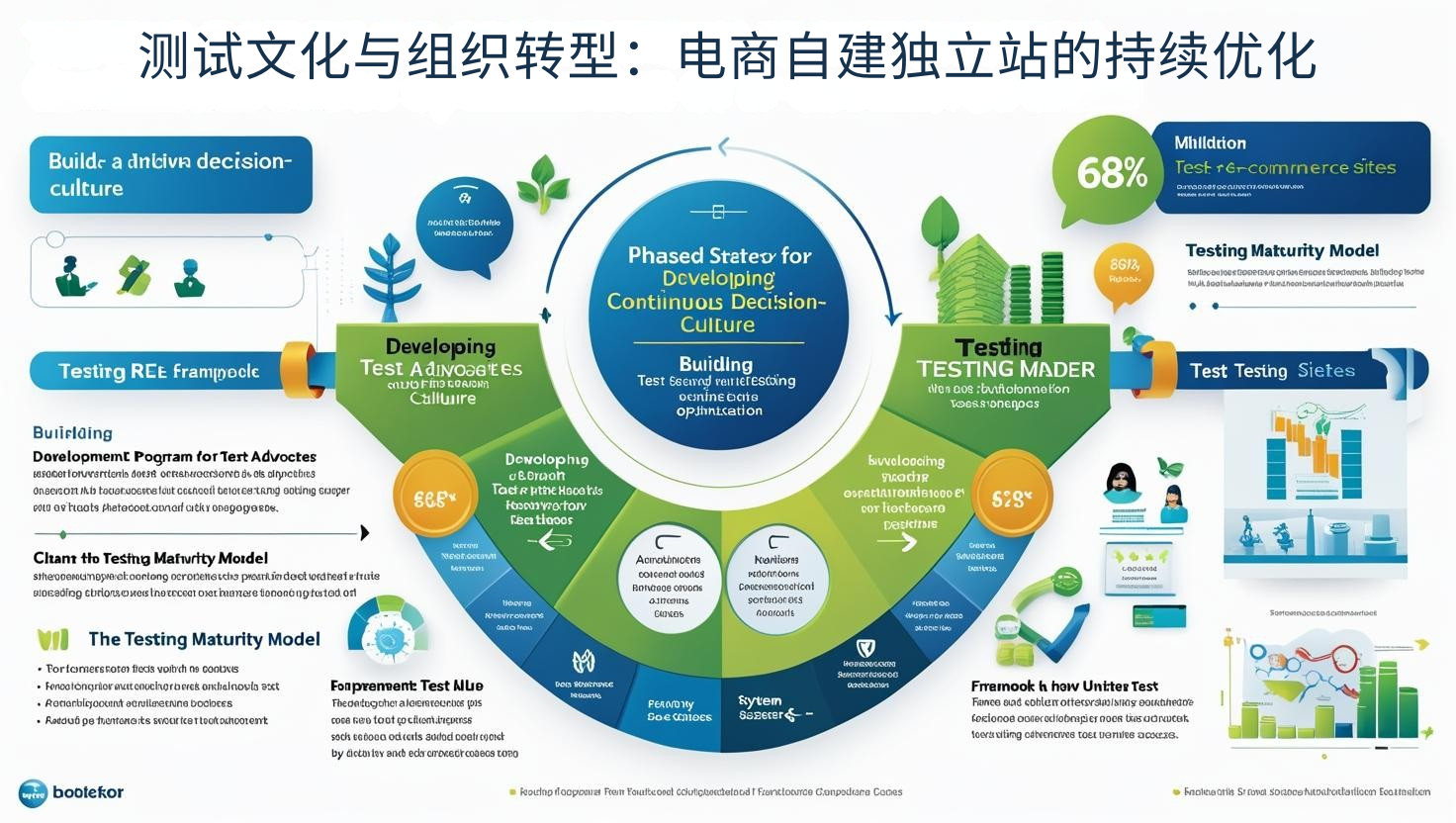 Testing Strategy and Framework: The Optimization Foundation of Self-Built E-Commerce Independent Websites
Testing Strategy and Framework: The Optimization Foundation of Self-Built E-Commerce Independent Websites
Testing strategy determines optimization efficiency. According to research by WhichTestWon, e-commerce websites with a systematic testing framework achieve an average return on investment of 4.2 times that of their random-testing competitors.
Build an Effective Testing Decision-Making System
-
Optimization Goals and Test Prioritization: Establish a clear hierarchy of testing goals and business impact assessments; create a test prioritization matrix based on traffic, value, and implementation difficulty; consider differentiated testing strategies for different channels and user groups; assess the balance of investment between quick wins and long-term projects; analyze historical data to identify key optimization opportunities and bottlenecks; design a test roadmap and quarterly planning framework; pay special attention to cross-cultural factors and testing differences in international markets. One effective strategy is the "PIE Scoring Framework" (Potential, Importance, Ease of Use). Research shows that this structured approach can increase the return on testing investment by approximately 61% while also improving team collaboration efficiency.
-
Testing Resources and Team Structure: Analyze the optimal test team composition and responsibilities for companies of different sizes; assess the cost-benefit balance between internal capability building and external collaboration; establish cross-functional testing committees and decision-making processes; consider collaborative work models for data analysis, design, and development; research systematic approaches to test knowledge management and experience accumulation; design testing culture cultivation and internal education programs; and focus on the collaboration challenges and solutions for globally distributed teams. Research shows that companies with dedicated optimization teams (even small ones) execute an average of 2.5 times more tests and achieve 3.1 times higher conversion increases than ad hoc testing arrangements.
-
Testing Tool Ecosystem and Technical Architecture: Compare the features, costs, and applicable scenarios of different testing platforms; create an integration framework for testing tools and analytics systems; consider the technical advantages of client-side versus server-side testing; evaluate the applicability of multivariate testing and AI optimization; research the technical balance between test speed and statistical reliability; design best practices for test code management and version control; and focus on the technical challenges and solutions for international testing. A key decision-making framework is the "test stack strategy," which systematically evaluates testing requirements at different levels. Research shows that this approach can reduce technical debt by approximately 43% and improve test implementation efficiency by approximately 27%.
 Experimental Design and Implementation: Testing Quality for Cross-border E-commerce Independent Websites
Experimental Design and Implementation: Testing Quality for Cross-border E-commerce Independent Websites
Experimental design determines test reliability. According to research by the CXL Institute, rigorous experimental design can increase the accuracy of test results by up to 73%, directly impacting the quality of decision-making.
Designing Scientific A/B Testing Experiments
-
Test Hypothesis and Variant Design: Create a structured hypothesis framework based on data and user research; design a clear hypothesis statement format and evaluation criteria; consider the appropriate scenarios for single-variable vs. multivariable testing; evaluate the significance and user perception of test variables; investigate variable interactions and combined impacts; design control and consistency controls for control and test versions; and pay special attention to the different responses of international users to variables. One effective approach is the "PIE Hypothesis Framework" (Problem, Insight, Expectation). Research has shown that this structure can increase the proportion of valid hypotheses by approximately 39%, significantly improving test success rates.
-
Sample Size and Testing Period: Master the scientific calculations of statistical significance and confidence levels; develop methods for determining ideal sample sizes for different test types; consider the optimal balance between traffic allocation and testing period; evaluate and manage the impact of seasonality and market fluctuations; research early stopping rules and risk management for continuous testing; design sampling strategies for segmented testing and targeted experiments; and pay special attention to feasible testing methods for low-traffic websites. A core strategy is "full-cycle testing," ensuring coverage of all business cycles. Research shows that this approach can reduce false positive results by approximately 57%, significantly improving test reliability.
-
Test Implementation and Quality Assurance: Establish technical specifications and quality checks for test code implementation; create a multi-device and multi-browser compatibility testing process; consider and manage the impact of tests on website performance and user experience; evaluate conflict management between test code and other features; research test exposure logic and user allocation mechanisms; design test monitoring and anomaly alert systems; and pay special attention to the technical challenges and localization issues of testing in international markets. Research shows that companies that implement rigorous test quality control experience an average of 34% fewer test errors and failures than their competitors who implement it more quickly, while also improving the reliability of test results by approximately 49%.
 Data Analysis and Interpretation: Insights from Cross-Border Self-Built Independent Website Testing
Data Analysis and Interpretation: Insights from Cross-Border Self-Built Independent Website Testing
Data analysis determines the quality of insights. According to Adobe research, in-depth test analysis reveals an average of 31% more optimization insights than superficial result interpretation, making it the key to maximizing the value of testing.
Extracting Valuable Insights from Data
-
Test Results Analysis Framework: Mastering statistical significance assessment and confidence interval interpretation; developing analytical methods for test main and interaction effects; systematically evaluating segmented analysis and user group differences; balancing short-term and long-term impact analysis; examining correlations and causal relationships between different metrics; designing false-positive control and result validation methodologies; and paying special attention to the differentiated analysis needs of different international markets. An advanced approach is "multi-level metric analysis," which simultaneously evaluates primary and secondary conversion metrics. Research shows that this approach can uncover approximately 47% of important insights missed by single-metric analysis.
-
Test Insight Extraction and Pattern Recognition: Establishing a systematic classification and pattern recognition framework for test results; creating a comprehensive analytical framework for cross-test insights; in-depth interpretation of user behavior changes and psychological factors; evaluating industry benchmarks and best practices for comparative analysis; studying response patterns across different markets and cultural contexts; developing integrated interpretation methods for qualitative and quantitative data; and focusing on in-depth exploration and value discovery of unexpected results. Research shows that companies that implement systematic insight extraction achieve an average return on testing investment of 2.7 times greater than those that simply interpret test results, while also significantly accelerating organizational learning.
-
Knowledge Management and Experience Accumulation: Design a structured system for test knowledge bases and experience accumulation; create standardized documentation and sharing formats for test results; consider mechanisms for cross-departmental insight dissemination and application; evaluate organizational learning and capacity building from test experience; research value mining and learning mechanisms for test failures; design a system for analyzing the correlation between test hypotheses and results; and pay special attention to knowledge sharing and addressing cultural differences within global teams. One systematic approach is the "test knowledge graph," which organizes test results into an interconnected network. Research has shown that this approach can increase knowledge application efficiency by approximately 56%, significantly accelerating organizational learning and optimization.
 Testing Culture and Organizational Transformation: Continuous Optimization of E-commerce Self-built Independent Websites
Testing Culture and Organizational Transformation: Continuous Optimization of E-commerce Self-built Independent Websites
A testing culture determines long-term results. According to Gartner research, companies that establish a data-driven culture achieve an average 23% higher growth rate and 21% higher profitability than those with traditional decision-making models.
Building a Data-Driven Decision-Making Culture
-
Testing Culture Cultivation and Resistance Management: Create a strategy for shifting mindsets from intuitive decision-making to data-driven validation; design a development program for test advocates and change leaders; consider approaches to building executive support and strategic alignment; evaluate proactive approaches to handling and learning from test failures; explore phased strategies for progressively developing a testing culture; design a system for celebrating and rewarding test successes; and pay special attention to differences in cultural adaptability among teams across different regions. An effective framework for assessing and developing organizational testing capabilities is the "Testing Maturity Model." Research shows that systematic cultural cultivation can increase testing implementation efficiency by approximately 68% while significantly improving organizational acceptance.
-
Test Process Optimization and Scaling: Establish end-to-end testing processes and standard operating procedures; create an optimization approach for balancing test speed and quality; consider technical implementations for test automation and scalability; evaluate optimization models for test resource allocation and return on investment; research best practices for integrating agile testing with development; design a balance between localization and centralization for international testing; and focus on the coordination challenges and solutions for simultaneous testing in multiple markets. Research shows that companies that optimize their testing processes increase the number of tests by an average of approximately 137% compared to traditional methods, while reducing testing cycles by approximately 43%, significantly accelerating optimization.
-
Growth Experimentation and Strategic Innovation: Design a strategic testing mindset that goes beyond simple optimization; create an experimental framework for business models and value propositions; consider a balanced strategy for systematic innovation and risk control; evaluate testing approaches for competitive differentiation and market positioning; research experimental systems for new market entry and product development; design an integrated model for long-term growth and short-term optimization; and focus on innovation diffusion and local adaptation in global markets. One advanced strategy is the "growth experimentation system," which treats every aspect of the business as a testable hypothesis. Research shows that this approach can reduce strategic errors by approximately 51% while significantly improving innovation speed and market adaptability.
With increasingly fierce global e-commerce competition, systematic A/B testing has become a key driver for the continuous optimization and growth of self-built e-commerce websites. By establishing a scientific testing strategy, designing rigorous experimental methods, conducting in-depth data analysis, and cultivating a true testing culture, companies can transcend subjective assumptions and industry conventions, build decision-making systems based on real user data, and continuously improve user experience and business performance. The key lies in transforming A/B testing from a discrete tool into a systematic methodology, upgrading it from a tactical approach to a strategic mindset, and establishing a truly data-driven culture and experimentation-oriented organization.
Related article recommendations: https://pinshop.cn/zh-Hans/blog/what-is-independent-site-for-business







